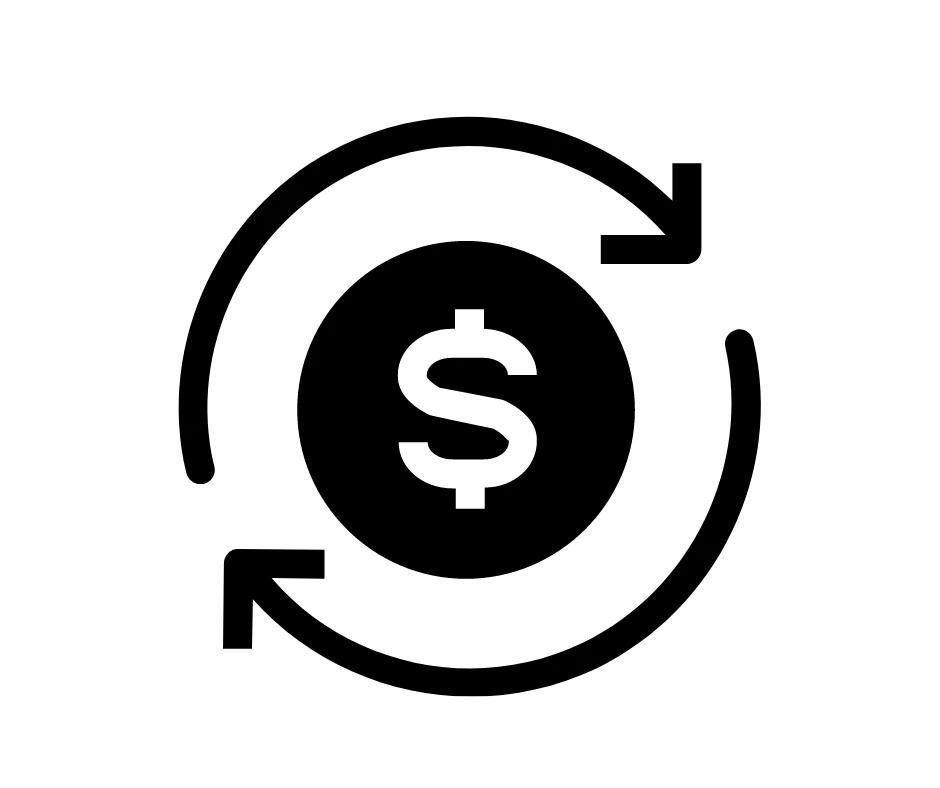How to Properly and Efficiently Measure Event ROI

What is Event ROI?
Event ROI is a measure of the profitability and effectiveness of an event. It calculates the ratio between the results achieved and the costs incurred in organizing and executing an event. The results are determined based on the objectives set for the event, which could be revenue generated, sales made, or any other performance indicator you can choose. By calculating event ROI, organizers can determine whether or not their investment was worth it and learn from it.
A high ROI indicates that an event successfully achieved its goals while minimizing costs. On the other hand, a low ROI means that more resources were spent than what was gained from the event. Measuring event ROI helps organizers identify areas where they can improve their strategies and tactics to achieve better results in future events. Ultimately, understanding how to measure and maximize event ROI correctly is essential for businesses looking to gain a competitive edge in today's market.
Why calculate event ROI?
Calculating event ROI is crucial for justifying the investment made in organizing and executing an event. It helps organizers demonstrate tangible and measurable results to management, which can lead to securing future budgets. By calculating the profitability and effectiveness of an event, organizers can identify areas where they can improve their strategies and tactics to achieve better results in future events.
Measuring event ROI also helps businesses understand the efficiency of theirmarketing actions, allowing them to gain a competitive edge in today's market. In short, calculating event ROI is essential for businesses looking to maximize their return on investment while minimizing costs.

Learn how to calculate ROI — Return on Investment
One of the first steps in measuring event ROI is learning how to calculate it correctly. This involves simple math, which can help organizers determine the profitability of their event. To calculate ROI, divide the total revenue generated by the total cost of the event. The resulting number will then be multiplied by 100 to get a percentage. For example, if you put in $200 and made $500, it would be 500/200=2.5x100=250%. Typically, any percentage over 7% is considered a good ROI. You can also go off of years past ROI. For example, if last year your ROI for a certain event was 4% and this year you are aiming for 5%, that is still good because you made an improvement from years past.
ROI is useful for both before and after events. Using this calculation, organizers can set out their goals for ROI at the start of planning their event. Then, by tracking and analyzing these numbers after the event, they can identify areas where they need to improve their strategies and tactics to achieve better results in future events. Calculating event ROI is crucial for justifying investments made in organizing an event and can help businesses maximize returns while minimizing costs.
Remember to include your time when calculating.
When calculating the ROI for your event, it's important to remember to include the time you and your team put into it. Even if you didn't pay your staff extra for their involvement, it's time away from their usual activities and should be factored into the overall cost of the event. This will give you a more accurate idea of its actual cost and allow you to evaluate its profitability better.
Don't overlook the hours spent planning, organizing, and executing the event - they are just as valuable as any other expense. Including your time in the calculation gives you a clearer picture of how much money was generated for every dollar invested. This can help guide future decisions regarding event planning and budgeting. It could make all the difference in achieving success at your next event!
ROI Goals for Event Organizers
Setting goals is essential for any event organizer looking to measure ROI. SMART goals (Specific, Measurable, Achievable, Relevant, Time-bound) are a popular framework for goal setting. However, event organizers can also use the CLEAR framework (Collaborative, Limited, Emotional, Appreciable, Refinable) to set more adaptable goals.
Once you have established your goals using either framework, connecting each to specific success metrics is important. This will enable you to accurately measure the effectiveness of your event and determine whether it achieved its objectives. When calculating ROI for your event, remember to factor in the time you and your team invested in planning and execution. By including this cost in your calculations, you'll be able to make more informed decisions about future events and ensure that they deliver maximum value for money.
Identify a primary goal
Identifying a primary goal is a crucial step in measuring event ROI. This goal should be specific and aligned with the overall purpose of your event, whether it's generating leads, increasing brand awareness, or launching a new product.
Once you have identified your primary goal, it's essential to establish metrics that will help you measure success. For example, suppose your goal is to generate leads. In that case, you might track the attendees who provided their contact information or the number of follow-up meetings scheduled after the event. By focusing on a primary goal and setting measurable metrics, you'll be able to accurately evaluate the effectiveness of your event and make informed decisions for future events.
Set measurable objectives related to your goal
To effectively measure event ROI, it's important to set measurable objectives that are directly related to your primary goal. For example, if your goal is to increase brand awareness, a quantifiable objective could be the number of social media impressions or mentions during and after the event.
If your goal is to launch a new product, measurable objectives include the number of product demos conducted or the number of sales generated during and after the event.
Setting measurable objectives not only helps you track progress toward your primary goal but also allows you to make data-driven decisions for future events. By analyzing the results of past events, you can identify areas for improvement and adjust your strategy accordingly. Measurable objectives also provide valuable insights into what aspects of your event were most effective in achieving success.
In summary, setting measurable objectives that align with your primary goal is essential for accurately measuring event ROI and making informed decisions for future events.
Capture data for each objective.

Once you've set measurable objectives for your event's primary goal, capturing data for each objective is important. This means identifying the tools and metrics that will help you measure progress toward each objective.
For example, if your objective is to increase attendee engagement, you might track metrics such as session attendance, survey responses, or social media activity. To capture this data, you could use tools like event apps with live polling features or social media listening tools.
Similarly, if your objective is to generate leads, you might track metrics such as the number of attendees who visit your booth or the number of business cards collected. Again, you could use lead retrieval systems or CRM integrations with your registration platform to capture this data.
Capturing data for each objective allows you to accurately measure progress toward your goals and make informed decisions about future events. In addition, by analyzing this data, you can identify areas for improvement and adjust your strategy accordingly.
Overall, capturing data is crucial in measuring event ROI and ensuring the success of future events.
Analyze and understand the results.
As we just discussed, gathering and tracking data related to your objectives is important to measure event ROI. This means identifying metrics to help you measure progress towards each objective, such as session attendance or business cards collected. By capturing this data, you can accurately measure progress toward your goals and make informed decisions about future events.
Analyzing the results allows you to identify areas for improvement and adjust your strategy accordingly, ensuring the success of future events. Remember that while KPIs may not always be convertible into euros, you can still correlate your evaluation to ratios such as cost per qualified lead generated or cost per press mentioned following the event. Use these ratios to compare costs with actual results and assess the overall success of your event.
Calculate your cost per lead.

Calculating your cost per lead is an important step in measuring event ROI. To do this, simply divide the total cost of your event by the number of leads generated. For example, if your event costs $1,000 and you generate 80 leads, each lead would have a cost of $12.50.
This information can help you make informed decisions about future events by determining if the cost per lead is worth the investment. Keep in mind that tracking subsequent sales can also provide insight into the value of each lead and overall ROI. Utilize these metrics to analyze and adjust your strategy for future success.
Work out where you could cut costs.
To measure event ROI properly and efficiently, it is important to determine where to cut costs. This can help you determine if there are alternative methods that could have achieved the same objective for less money. For example, you can compare the cost of your event against other metrics such as media coverage or employees recruited.
By doing so, you can identify areas where you may be overspending and adjust your strategy accordingly. This information can also help you make informed decisions about future events and investments by determining if the cost per lead is worth the investment. Analyzing and adjusting your strategy based on these metrics is essential for success in measuring event ROI.
What is a good return?
A good return on investment for an event can be defined in various ways. Ultimately, it comes down to whether the value generated by the event is higher than the cost of putting it on. This could mean developing new leads, increasing sales revenue, or improving brand recognition. Setting clear goals for your event and measuring success based on those objectives is important. Factors such as attendee satisfaction and media coverage can also contribute to a good return.
By accurately tracking expenses and measuring results, you can determine if your event was successful and identify areas for improvement in future events. But, of course, a good return ultimately depends on each event's specific goals and objectives and your personal beliefs.
Generate more revenue with your data.
The importance of data must be remembered during this process. Generating revenue is a key objective for any event, and we spoke about how data can play a crucial role in achieving this goal. By collecting and analyzing attendee information, you can gain insights into their preferences and behaviors, which can help you tailor your offerings and marketingefforts to meet their needs better. This can lead to increased engagement and higher conversion rates.
One way to generate more revenue with your data is by offering personalized experiences or products based on attendees' interests or purchase history. For example, if you know that a particular group of attendees is interested in a specific product or service, you could offer a special promotion or package specifically for them. This increases the likelihood of sales and enhances the overall attendee experience.
Additionally, using data to identify high-value customers or prospects can help you prioritize your sales efforts and focus on those most likely to convert. By segmenting youraudience based on factors such as demographics or behavior, you can create targeted marketing campaigns that are more likely to resonate with each group.
Overall, leveraging data effectively can be a powerful tool for generating more revenue from your events. Understanding your audience better and tailoring your offerings accordingly can improve attendee satisfaction while increasing sales and ROI.
In Conclusion
ROI should never be an afterthought for brands regarding event marketing. While brand awareness is a significant benefit, any event's ultimate focus should always be achieving a positive return on investment. The best way to measure this is by setting clear objectives and collecting all relevant data throughout the event timeline. Then, by understanding the audience's behavior, engagement levels, and other insightful metrics, you can make meaningful real-time adjustments to increase your chances of achieving maximum ROI.
Event Promotion  Your All-in-One Event Management Platform
Your All-in-One Event Management Platform
Host Events with Ease! Events.org's comprehensive event management platform makes it easy to optimize, automate and maximize your organization's entire charitable event calendar.Events.org Benefits:
✓ Simple, Affordable Pricing for Paid Events: $1 per Transaction!
✓ FREE Events are always FREE
✓ Host & Manage Any Event
✓ Dedicated Customer Support
✓ Branded Event & Donation Pages
✓ Donor and Contacts Management (CRM)
✓ Membership Management
✓ Conference Management
✓ Volunteer Management
BONUS: Free access to the iBid's Mobile Auction AutoPilot™ - This automation tool saves you time & stress while streamlining auction tasks. Manage auction items and payment processing, including express checkout & digital receipts!
